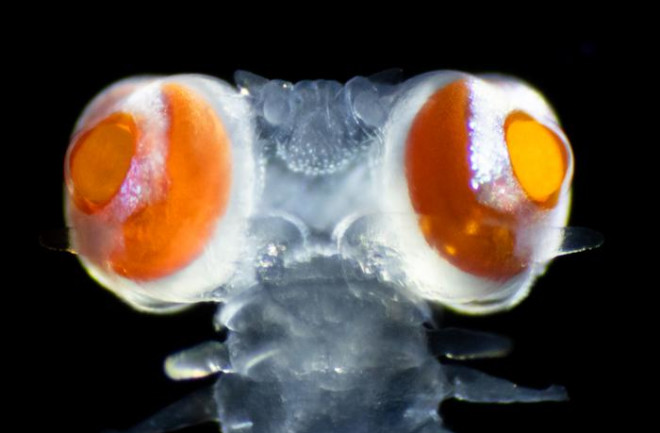Why does a creature that hunts at night need eyes that weigh about twenty times its head?
The question sounds like the set-up to a bad joke or a riddle from a sphinx. But it hooked biologist Anders Garm from the University of Copenhagen’s Department of Biology after his colleague Michael Bok at Lund University showed him a video of the Vanadis bristle worm.

